Evolution of the Entertainment Industry
Entertainment plays an important in our lives. It brings individuals together, increases happiness and releases stress. Some even consider entertainment a basic human need.
Print media—newspapers, magazine news, or books, to name a few—is the oldest form of mass communication. It started around 1440, and Johannes Gutenberg is often cited as the inventor of the printing press, the device that made it possible to print letters on printing mediums with ink.
Later, radios debuted in the early 20th century and influenced mass media communication. Thereupon came the era of animated visual imagery—television. The first broadcast was in 1928, and from there on, everything else followed, from VCR to DVDs along with extensions that can be connected to televisions, such as game consoles.
Radio outperformed newspaper because of voice, TV outperformed radio because of motion, and the internet is outperforming television because of interactivity.
Today, the combination and culmination of print media, radio, and television grew to become the media and entrainment industry (M&E). The USA is the largest player globally, with an industry valued at $720 Billion.
Movies, video games, videos, and music are all substrates of the M&E industry. The trillion-dollar industry has been growing at a pace of 5% year over year, representing roughly 800 billion over the last decade.
The industry has nearly doubled in market value from 1,39 trillion in 2011 to 2,3 trillion in 2022 and is forecasted to reach 2,6 by 2025.
What led to these astronomical numbers has a lot to do with our desire for experiences beyond reality.
Let's explore the relationship between the M&E industry, innovation, and attention.
How do virtual experiences fuel innovation and the economy?
Like psychedelics, virtual experiences that help us escape reality release feel-good chemicals such as dopamine and endorphins. For example, experiences such as watching a movie*, listening to music or playing video games create a feeling of relaxation and pleasure associated with the release of these chemicals.
Research conducted by Patrick Barwise and his colleagues reveals that watching TV and videos generated brainwaves associated with pleasant, wakeful relaxation and absorbed cognitive capacity, taking viewers' minds off other things.
The ability of these experiences to take us away from the present in a pleasant manner is the value they provide us with. It, therefore, comes as no surprise that the most-watched movie categories are primarily those with a lot of visual tricks and illusions.
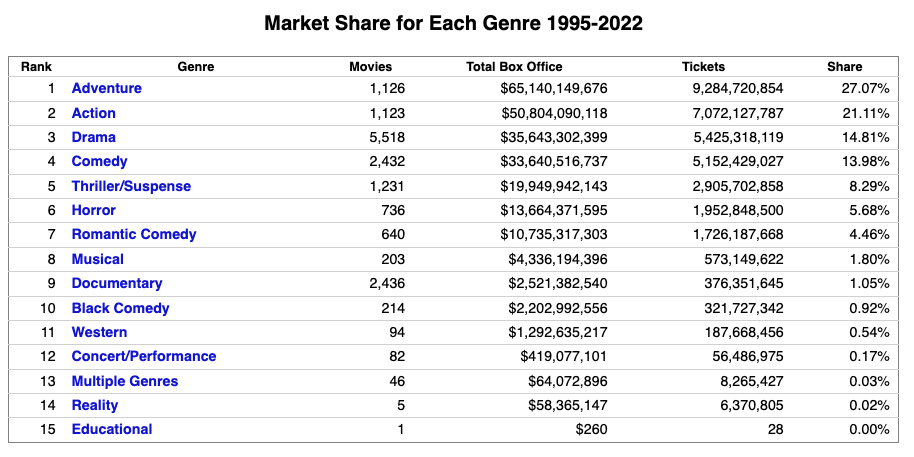
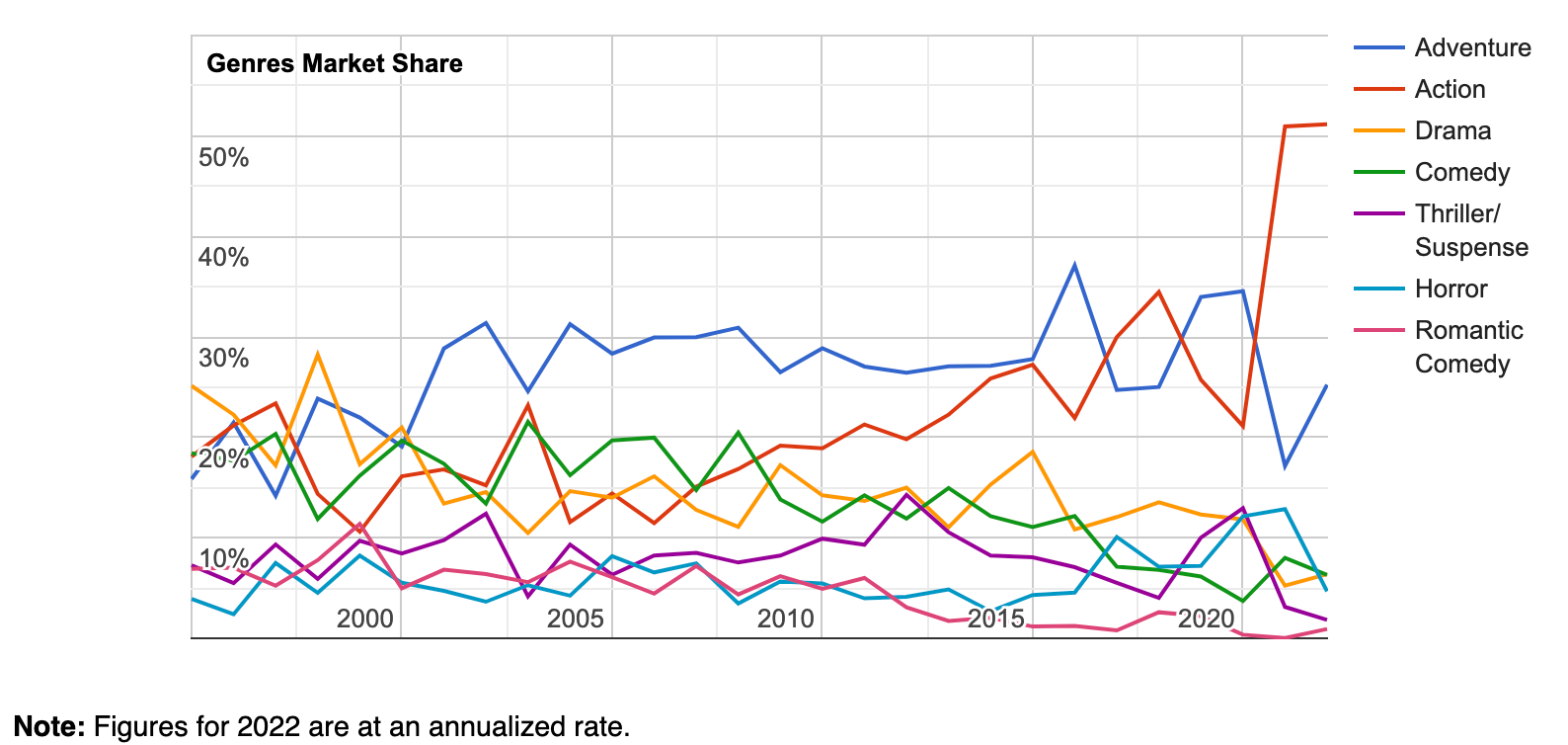
The consumer and enterprise virtual reality (VR) market revenue worldwide has been on an upward trend since 2019 and is forecasted to reach $12,19 billion by 2024.
It is fair to say that our desire for virtual experiences has not been slowing down either. We crave more of these sorts of virtual adventures.
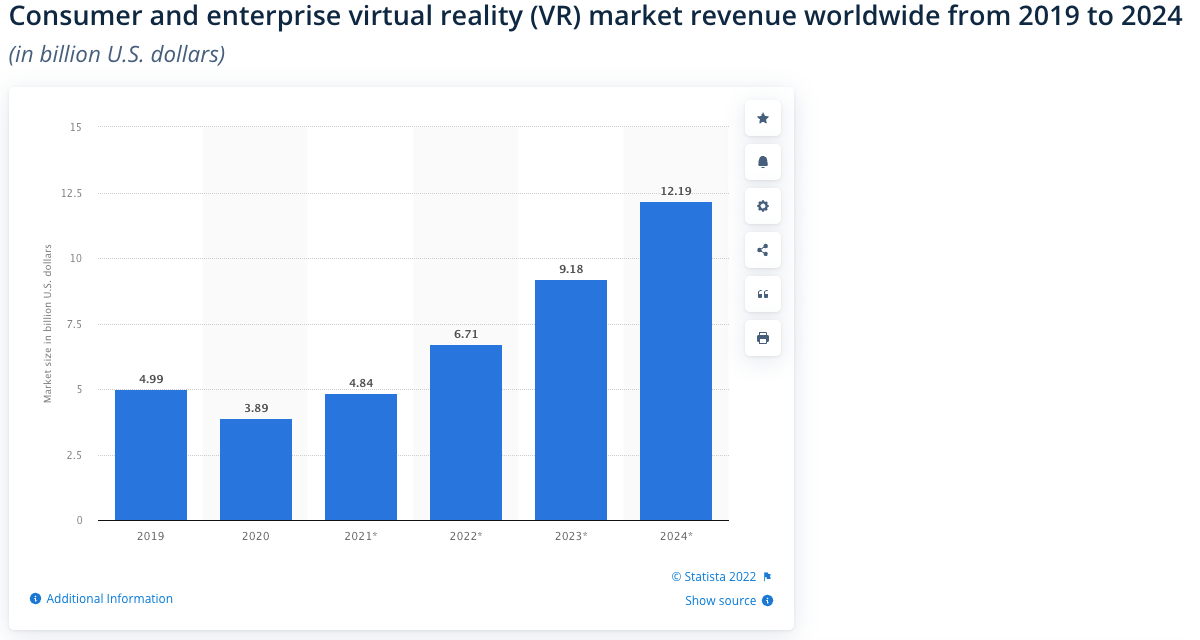
When we watch an episode of a series, we suddenly feel the need to watch the next one and the one after (simply put, binge-watching) and this phenomenon is associated with several positive effects. The same applies to video games.
They allow us to be in places we would not otherwise be; we essentially escape reality.
The problem, however, is that with time, we get bored, as they become redundant and no longer entertaining. If they no longer provide us with the feeling of relaxation and fun they are intended to deliver, we crave novelty.
Therefore, to keep us hooked and gain our attention, it is essential to have new and fresh experiences. To say the least, creating these new virtual experiences will require creative ideas fused with modern technology to allow their quick realisation, of high quality and at scale.
Ultimately this has led to an increased output of contents (for the better and the worse), so much so that we cannot possibly consume all that there is to consume, let alone extract value from them.
You have probably heard of the so-called attention economy. But before diving into the attention economy, let's have a look at the concept of attention.
Attention And The Economy
Attention is defined as the ability to focus selectively on some information while ignoring others.
In other words, when we give attention to something, we choose to value that thing more than the available alternatives.
This suggests that attention implies consideration, importance, or value or all of them and that value or importance drives the so-called attention economy.
Herbert Simon, the 1970s Nobel Prize-winning economist, coined the term "Attention Economy", saying: "What information consumes is the attention of its recipients. Hence a wealth of information creates a poverty of attention".
The idea behind this is that our attention is very limited, and external stimuli far outweigh our focus breadth.
There is a supply and demand imbalance, where we have more information on the supply side and a short focus span on the demand side, which could represent an opportunity for economic gains.
Studies show that our attention span has been on the decline over the past decade and is now less than 9 seconds.
Because of this scarcity, especially in today's technology-driven economy, the winners in the quest for attention will need to create value before they can capture it.
Whoever can capture our attention can then leverage it for financial gains (or perhaps something else).
The Emergence of Attention-based Marketing(ABM)
We constantly interact with the virtual world, which requires us to pay attention.
The amount of information available makes it difficult to focus on one single thing for an extended period of time; in other words, we all suffer from digital ADHD.
The way content is consumed has reshaped how it is produced and distributed across various platforms. It is often done in short formats (think of TikTok or Youtube shorts) to not bore consumers and lose them.
And modern marketers are leveraging new ways to extract value from attention through attention-based marketing.
Attention-based marketing(ABM) optimises marketing efforts by understanding what catches customers' attention. ABM combines many fields such as consumer behaviour, vision research, cognitive psychology, and neuroscience to support marketing goals.
This, in turn, allows companies to increase brand awareness. The attention economy does not only revolve around increasing brand awareness but also in shaping consumer behaviour.
Marketers use their customers' psychological, emotional, and aspirational appeal to promote products and services.
ABM has been accelerated by the evolution of technological measures for eye tracking, which makes it easier for firms to leverage data through the different mediums users use to engage with their content.
Ultimately, the goal of using such technologies and processes is to improve the consumer's overall experience by providing them with what they are looking for, at the right place and at the right time.
How Does Innovation Fuel The Quest for Attention?
In today's ever-changing Information and Innovations Age, we are constantly developing new technologies—each one promising to be the new best thing.
These technologies enable us to create and be part of virtual simulations that mirror reality and often disconnect us from it, blurring the lines between the real and virtual world. The driving force that makes it all possible is not our desire for these experiences alone.
At the core, what supports the creation of such experiences and fuels the growth of the M&E industry(among many others) at large, are these tiny, often unnoticed devices that run under the hood—microchips.
The Role of Microchips
Ever since the dawn of chip-sized components, microchips have vastly increased the capabilities of nearly every device available.
From built-in GPS in cars to memory chips found in portable phones, we are able to explore more opportunities within what seems to be a limitless virtual world. They allow us to create unprecedented digital simulations.
They make it simple to store, process, and transmit information. They provide the tools that are needed to make the virtual feel real. Many of our daily tools such as phones, computers, television, or credit card are all real-life use cases of microchips that rely on semiconductors to function correctly.
Here is a visual of the global semiconductor market share with the networking and communication application segment dominating the market, which comes as no surprise given that most information exchanges go through a complex network of machines.
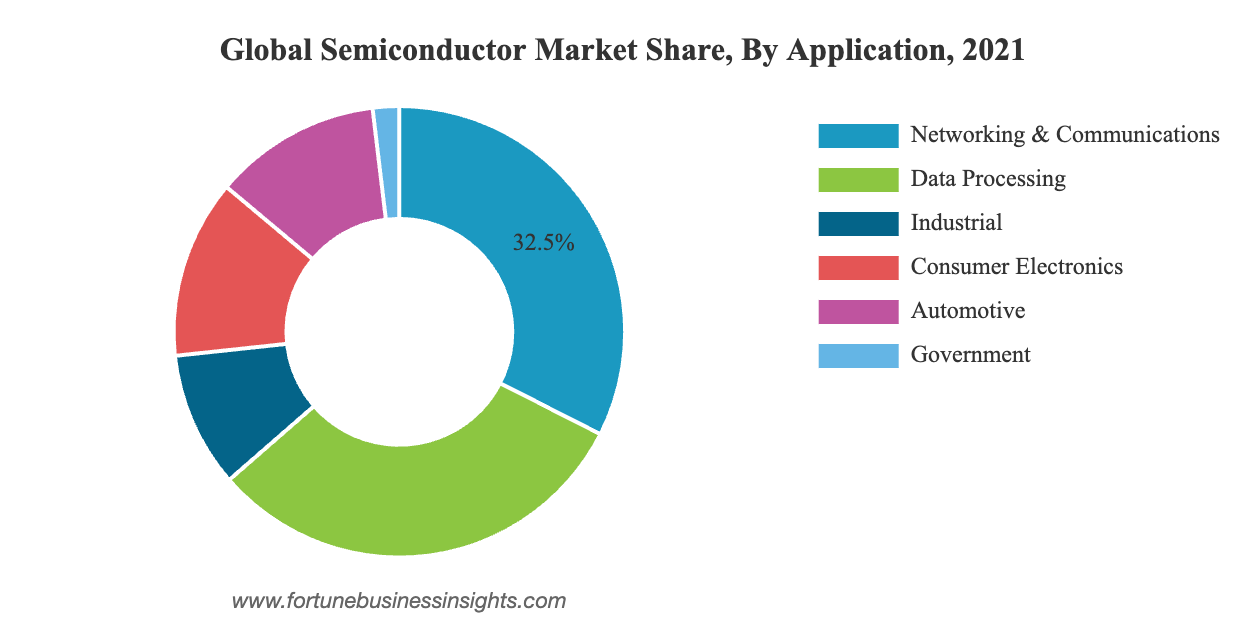
Here is how it affects creators at the individual level.
Imagine the creative artist that takes hours or often days to render his work; now, with a new and improved chip, technology can produce the same creative work in under 30 minutes, all the while making the experience more fun because they have access to a new chip that allow them to produce better, faster and with more special effects.
This, in turn, allows them to produce more. The more they produce, the easier it is to access larger audiences (partly due to platform algorithms) which increases the demand for such creative work, provided it is of quality. And the cycle goes on.
The Bottom Line
It's all connected—Innovation, Entertainment and Attention. Attention is valuable, and M&E players are fighting to get as much of it as possible. It is a game of both providing and capturing value, on the one hand by fulfilling our desire and on the other by monetising our attention.
In the end, the winners of the attention economy will need to create more value before they can capture it because our attention span is short (and probably decreasing). As our needs(fictional and real) increase, the pressure on the M&E players grows, which will trigger a massive demand in the semiconductor industry.
Moreover, the relentless quest for virtual experiences will only continue to grow, particularly in countries where most of the population has access to the internet.
Obviously, many other factors, such as consumerism, digital identity, climate, data processing, etc., need to be considered because the system is interconnected and complex. But to give credit where it's due, the M&E industry and its supporting industries are not only important but indispensable.
References
Gerben Bakker, 2011."Leisure Time, Cinema and the Structure of Household Entertainment Expenditure, 1890–1940," Chapters, in Samuel Cameron (ed.), Handbook on the Economics of Leisure, chapter 16,Edward Elgar Publishing.https://ideas.repec.org/h/elg/eechap/13469_16.html>
Allègre L Hadida & Joseph Lampel & Amit Joshi & W. D. Walls, "undated"."Hollywood Studio Filmmaking in the Age of Netflix: A Tale of Two Institutional Logics,"Working Papers 2019-13, Department of Economics, University of Calgary.https://ideas.repec.org/p/clg/wpaper/2019-13.html Allègre
L. Hadida & Joseph Lampel & W. David Walls & Amit Joshi, 2021."Hollywood studio filmmaking in the age of Netflix: a tale of two institutional logics," Journal of Cultural Economics, Springer;The Association for Cultural Economics International, vol. 45(2), pages 213-238, June.https://ideas.repec.org/a/kap/jculte/v45y2021i2d10.1007_s10824-020-09379-z.html
Genres Movie Breakdown 1995-2022. (2022). https://www.the-numbers.com/market/genres
The computer chip industry has a dirty climate secret. (2021). https://www.theguardian.com/environment/2021/sep/18/semiconductor-silicon-chips-carbon-footprint-climate
The surprising health benefits of binge-watching. (2021). https://mashable.com/article/binge-watching-health-effects Semiconductor Market Size, 2. (2022).
Semiconductor Market Size & Share | Industry Growth [2029]. https://www.fortunebusinessinsights.com/semiconductor-market-102365
Evolution Of The Unpredictable Media Industry. (2020). https://www.theeducationmagazine.com/evolution-unpredictable-media-industry/
The Other ABM: The Rise Of Attention-Based Marketing. (2016). https://www.pathfactory.com/blog/video-the-other-abm-the-rise-of-attention-based-marketing/.
Watching films releases 'natural painkiller'. (2022). https://www.bbc.com/news/science-environment-37418551 Orquin, J., & Wedel, M. (2020).
Contributions to attention-based marketing: Foundations, insights, and challenges. Journal Of Business Research, 111, 85-90. DOI: 10.1016/j.jbusres.2020.02.012
Subscribe to our email newsletter and unlock access to members-only content and exclusive updates.
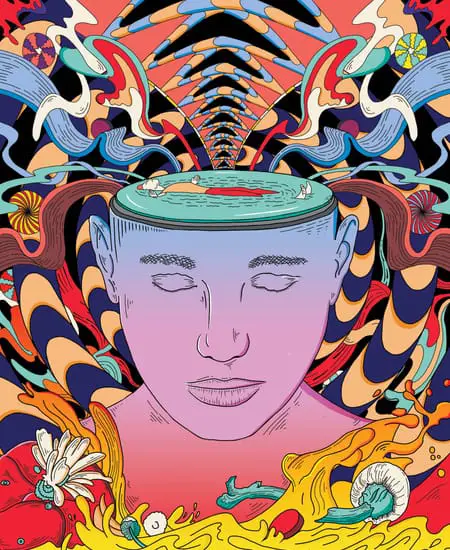
Comments